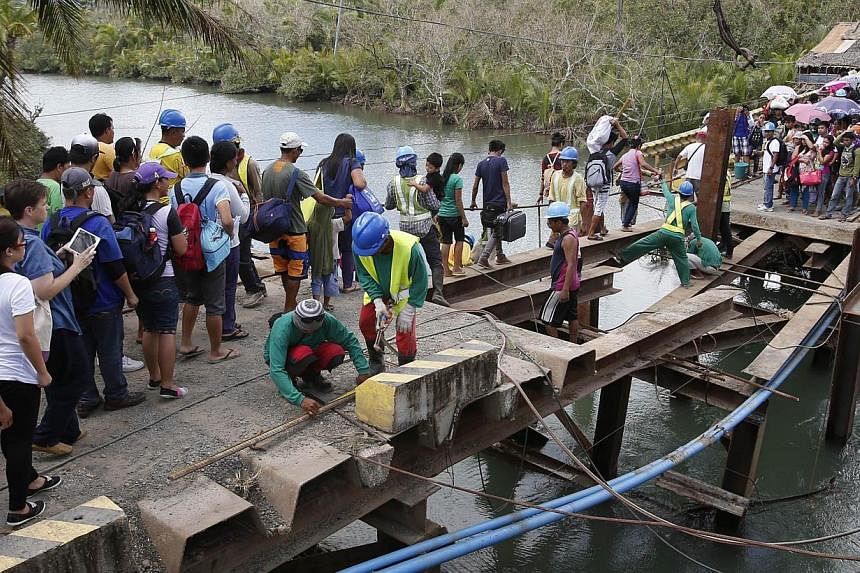MANILA (REUTERS) - Philippine rescue teams were struggling on Wednesday to reach upland communities on an eastern island which took the brunt of a typhoon at the weekend amid security fears in an area known as a hotbed of Maoist insurgents.
Typhoon Hagupit destroyed nearly 16,500 houses and damaged more than 33,100 on the island of Samar before making its way slowly across the country. It has since been downgraded to a tropical storm and on Wednesday was headed for southern Vietnam.
The national disaster agency said nine people were killed as the storm churned across the central islands and the southern tip of the main island of Luzon.
The Red Cross has confirmed 22 deaths. The health ministry and Red Cross were checking reports that nearly 40 people died.
"We're trying to reach upland villages ... but landslides and fallen trees make it difficult," Richard Gordon, head of the Philippine Red Cross, told Reuters.
"...We expect casualty figures to increase as we get more information on the ground."
The Red Cross has rented a civilian helicopter to survey upland areas and try to find a place to land, but officials say privately they are worried their communications equipment might be stolen by communist rebels.
New People's Army guerrillas have been fighting the government for 45 years. They have a strong presence in poor rural communities, like Samar, living in bunkers and thatched huts.
Military spokesman Colonel Restituto Padilla said the threat was minimal from a group not known for kidnappings, unlike the Muslim Abu Sayyaf militants operating in the south.
"We know the risks so we escort the people involved in humanitarian work, especially if there are international aid agencies there. We don't want any untoward incident."
Alexander Pama, executive director of the national Disaster Risk Reduction and Management Council, said more than two million people were "affected" by Hagupit and about 1.7 million were evacuated to shelter areas.
About 800,000 jobs and livelihoods were disrupted or lost, according to the International Labour Organisation.
The agriculture ministry has estimated farm damage, mostly rice, at 1.3 billion pesos (S$38.3 million). About 56,000 metric tonnes of rice, corn and other crops were lost.
But the damage was nowhere near that wrought last year by Typhoon Haiyan, which destroyed or damaged more than a million homes and killed, or left missing, more than 7,000 people.
Interior Secretary Manuel Roxas praised the early evacuations.
"The cooperation of our people was very noticeable," Roxas said. "We did not see, for instance, price increases, hoarding and looting of shops and petrol stations."

